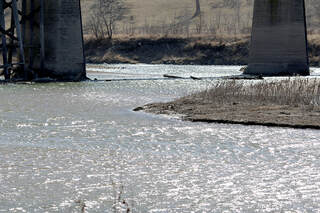More than half of Iowa’s tested streams and lakes are ‘impaired’
(Photo by Jared Strong/Iowa Capital Dispatch)
By: Jared Strong - March 15, 2024
There are at least 721 water body segments in Iowa that do not meet water quality standards for recreation, public water supplies and the protection of aquatic life, according to the state Department of Natural Resources.
The DNR has drafted its latest list of “impaired” waters that it is required to submit to the U.S. Environmental Protection Agency every two years. The list is based on data collected by the department and numerous other entities between 2020 and 2022, and it is used to guide restrictions for stream pollution for sources such as wastewater treatment systems.
The number of impaired water body segments — which can be lakes, wetlands and parts of streams — declined about 4% from the last report in 2022.
But just 24% of stream segments and 30% of lakes that were sampled were deemed healthy. Elevated bacteria concentrations were the most-cited cause of impairment.
“We’re going to see fluctuations based on the climate, how much rainfall we’re getting, what the stream levels are,” said Noah Poppelreiter, water monitoring supervisor for the DNR.
He declined to speculate about water quality trends in the state but said the department has worked to increase its monitoring in recent years.
It assessed more than 1,400 segments for the latest report, which is a little more than half of the total segments identified by the state.
The 387 segments deemed “healthy” by the DNR are mostly composed of waters that meet some quality standards but lack sufficient data to determine that all the standards are met.
Only 24 water body segments had proof they met all the standards, up from 15 in the last report two years ago.
“That’s an abysmal number,” said David Cwiertny, director of the Center for Health Effects of Environmental Contamination at the University of Iowa. “It shows we’ve got really severe water quality problems.”
The DNR noted 47 fish kills during the monitoring period. Animal waste, fertilizers and pesticides accounted for more than half of them. The causes of a third of the kills were unknown.


 RSS Feed
RSS Feed


